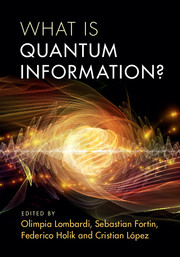So far we have not discussed how physical systems change with time. This chapter is devoted exclusively to the dynamic development of state kets and/or observables. In other words, we are concerned here with the quantum mechanical analogue of Newton's (or Lagrange's or Hamilton's) equations of motion.
TIME-EVOLUTION AND THE SCHRÖDINGER EQUATION
The first important point we should keep in mind is that time is just a parameter in quantum mechanics, not an operator. In particular, time is not an observable in the language of the previous chapter. It is nonsensical to talk about the time operator in the same sense as we talk about the position operator. Ironically, in the historical development of wave mechanics both L. de Broglie and E. Schrödinger were guided by a kind of covariant analogy between energy and time on the one hand and momentum and position (spatial coordinate) on the other. Yet when we now look at quantum mechanics in its finished form, there is no trace of a symmetrical treatment between time and space. The relativistic quantum theory of fields does treat the time and space coordinates on the same footing, but it does so only at the expense of demoting position from the status of being an observable to that of being just a parameter.
Time-Evolution Operator
Our basic concern in this section is, How does a state ket change with time? Suppose we have a physical system whose state ket at is represented by. At later times, we do not, in general, expect the system to remain in the same state. Let us denote the ket corresponding to the state at some later time by
where we have written α,
to remind ourselves that the system used to be in state
at some earlier reference time. Because time is assumed to be a continuous parameter, we expect
and we may as well use a shorthand notation,
for this. Our basic task is to study the time evolution of a state ket:
To put it another way, we are interested in asking how the state ket changes under a time displacement.
